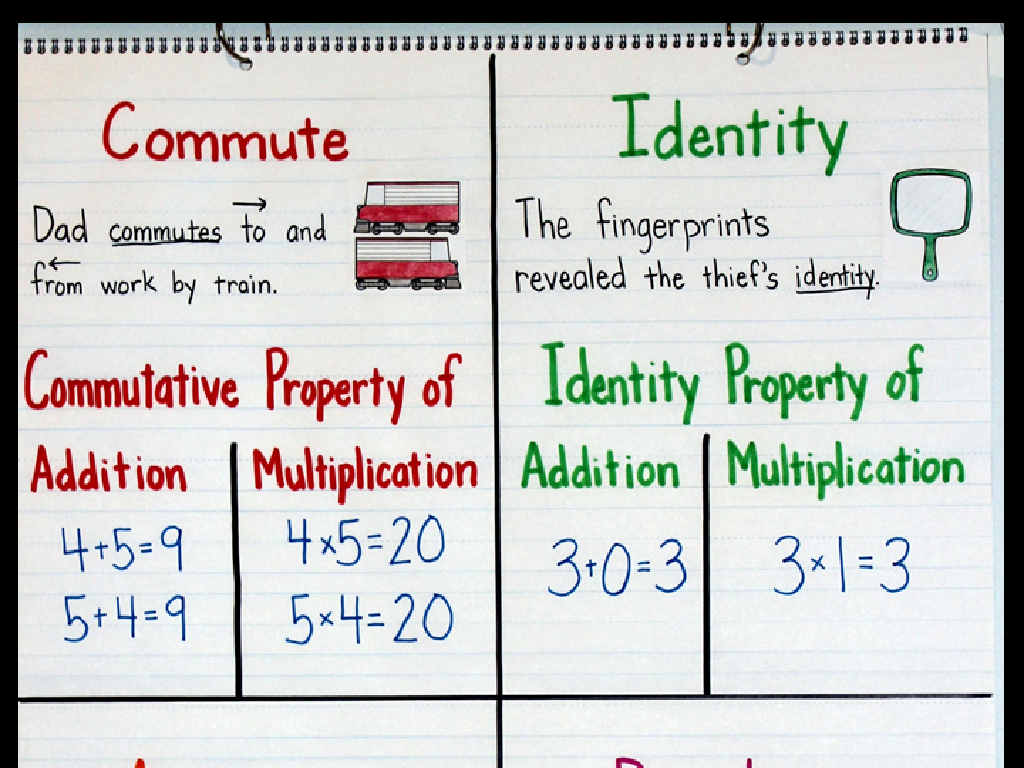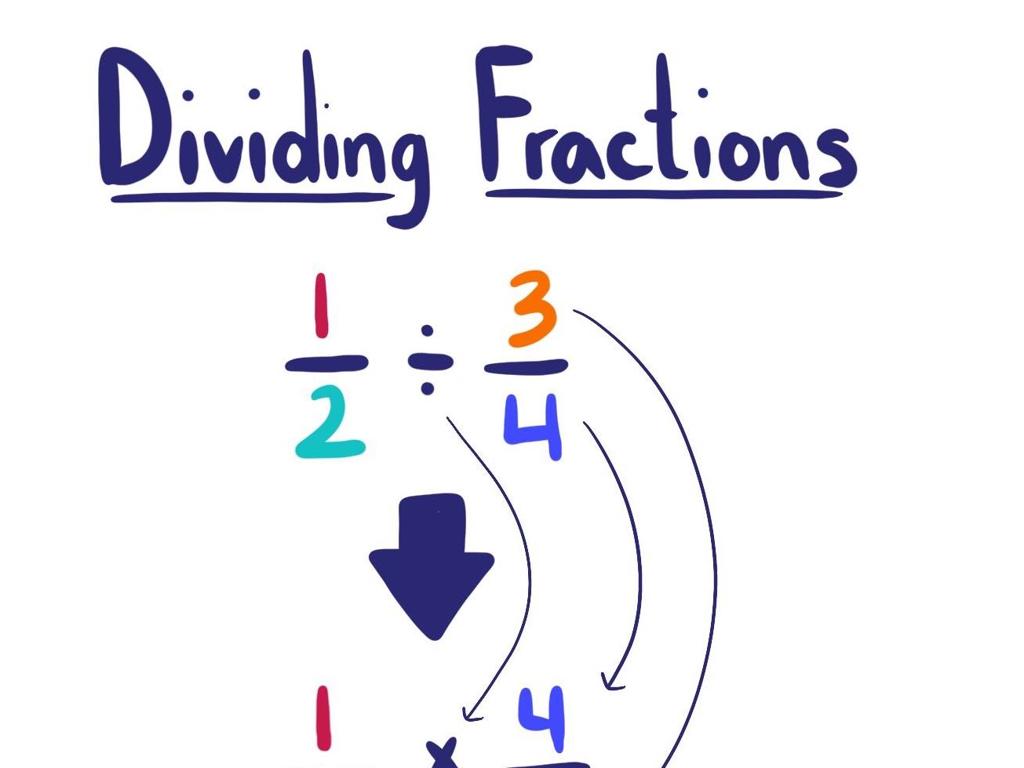Estimate Products Of Decimal Numbers
Subject: Math
Grade: Sixth grade
Topic: Multiply And Divide Decimals
Please LOG IN to download the presentation. Access is available to registered users only.
View More Content
Estimating Decimal Products
– Decimals in daily life
– Money and measurements often use decimals
– Estimation: a valuable skill
– Quick, useful for checking math or making decisions
– Estimating decimal products
– Rounding decimals before multiplying for an estimate
– Today’s lesson overview
|
This slide introduces the concept of estimating products of decimal numbers. Begin by discussing how decimals appear in everyday situations, such as in currency and measurements, to help students relate to the topic. Emphasize the importance of estimation as a skill for making quick calculations and decisions, especially when exact numbers are not necessary. Explain that today’s lesson will focus on how to round decimals to estimate their products, a technique that simplifies multiplication and provides a close approximation of the answer. The overview should prepare students for a practical understanding of the topic and its applications.
Understanding Estimation with Decimals
– What is estimation?
– Estimation is finding a number close to the exact amount.
– Why round numbers?
– Rounding makes complex calculations simpler.
– Estimation in daily life
– Use estimation to budget shopping or measure distances.
– Practice estimation examples
– Example: Estimate product of 4.86 x 3.1 by rounding to 5 x 3.
|
Estimation is a mathematical strategy used to find an approximate value rather than an exact answer. It’s particularly useful when dealing with decimal numbers, as it simplifies calculations. Rounding numbers is a key skill in estimation, as it allows students to work with simpler figures. In real-life scenarios, estimation is used for tasks like budgeting, where exact values are not necessary. Provide students with examples of estimation, such as rounding prices during shopping to quickly calculate total costs. Encourage them to practice by rounding decimals to the nearest whole number before multiplying, to get a sense of the product’s approximate value.
Rounding Decimal Numbers
– Review decimal place values
– Places after the decimal: tenths, hundredths, thousandths, etc.
– Rules for rounding to whole numbers
– If the digit in the tenths place is 5 or more, round up.
– Let’s practice rounding decimals
– We’ll round numbers as a class and check our answers.
– Understand estimation in products
– Estimating helps simplify multiplication of decimals.
|
Begin with a quick review of decimal place values to ensure students are familiar with terms like tenths, hundredths, and thousandths. Explain the rules for rounding decimals to the nearest whole number, emphasizing the importance of the tenths place in determining whether to round up or down. Engage the class in a collaborative practice session where students round a series of decimal numbers together. Discuss how rounding helps in estimating the product of decimal numbers, making multiplication easier and quicker. Provide examples and encourage students to explain their thought process as they round each number.
Estimating Products of Decimal Numbers
– Review: Multiplying decimals
– Steps for decimal multiplication
– Multiply as whole numbers then place the decimal point
– Aligning decimal points
– Decimal points must line up vertically
– Example: Multiply two decimals
– E.g., 0.7 x 0.3 = 0.21 (7 x 3 = 21, two decimal places)
|
Begin with a quick review of multiplying decimals to refresh students’ memory. Emphasize the importance of aligning decimal points to avoid calculation errors. Walk through the steps of multiplying decimals without shifting the numbers, just as with whole numbers, and then placing the decimal in the product. Use an example like 0.7 multiplied by 0.3 to illustrate the process. Show students how to count the total number of decimal places in the factors to determine where to place the decimal in the answer. This foundational understanding will help them estimate products of decimal numbers more accurately.
Estimating Decimal Products
– Learn to estimate by rounding
– Round decimals to nearest whole number
– Choose easy numbers to multiply
– Pick numbers that simplify multiplication
– Example: Multiply rounded numbers
– 3.4 x 4.7 H 3 x 5 = 15
– Practice with different decimals
|
This slide introduces students to the concept of estimating the product of decimal numbers, which is a useful skill for quick calculations and checking the reasonableness of answers. Start by explaining how to round decimals to the nearest whole number, as this simplifies the multiplication process. Emphasize choosing numbers that make the multiplication easier, such as rounding to 0, 0.5, or a whole number. Provide an example by rounding two decimals and multiplying them, then compare the estimated product to the actual product. Encourage students to practice with different sets of decimals to become comfortable with estimation. This skill will aid them in more complex mathematical problems and real-life situations where exact numbers are not necessary.
The Importance of Estimation Skills
– Estimation in real-world scenarios
– Estimation helps in making quick, practical decisions.
– Estimation for shopping budgets
– While shopping, we estimate total cost to stay within budget.
– Estimation in managing time
– Estimating time helps plan activities and avoid being late.
– Practice estimation accuracy
|
This slide aims to highlight the significance of estimation in everyday life, particularly for sixth graders learning to multiply and divide decimals. Estimation is a critical skill that aids in making quick decisions without the need for exact calculations. For example, when shopping, students can use estimation to quickly determine if they have enough money to purchase items and stay within their budget. In terms of time management, being able to estimate how long tasks will take can help students plan their activities and use their time effectively. Encourage students to practice estimation in various scenarios to improve their accuracy and confidence in using this skill.
Class Activity: Estimation Station
– Group activity instructions
– Estimate decimal products
Round decimals, then multiply to estimate
– Share and discuss estimates
Explain your estimation process to the class
– Reflect on estimation accuracy
Compare estimates with actual products
|
This activity is designed to enhance students’ understanding of estimating products involving decimal numbers. Divide the class into small groups and provide each group with a set of decimal multiplication problems. Students should use rounding to estimate the products of these decimals. After completing the estimations, each group will share their results with the class and discuss the different methods used for estimation. Encourage students to reflect on the accuracy of their estimates compared to the actual products. This will help them grasp the importance and practicality of estimation in everyday calculations. Possible activities include estimating costs of items, distances, or quantities in recipes, providing a variety of contexts to apply their estimation skills.
Wrapping Up: Estimation of Decimal Products
– Recap: Estimating Decimal Products
– Review rounding decimals and multiplying
– Importance of Estimation Skills
– Estimation helps in quick & reasonable calculations
– Homework: Practice Estimation
– Solve provided problems to sharpen your skills
– Share your thoughts next class
|
As we conclude today’s lesson, remind students of the key steps in estimating decimal products: rounding the decimals to nearest whole numbers or significant digits and then multiplying. Emphasize the importance of estimation skills in everyday life for making quick, yet reasonable calculations. Assign practice problems that reinforce today’s lesson and prepare students for more complex operations with decimals. Encourage students to bring any questions or insights to the next class for discussion. This will not only help them understand the concept better but also build their confidence in using math in practical situations.






